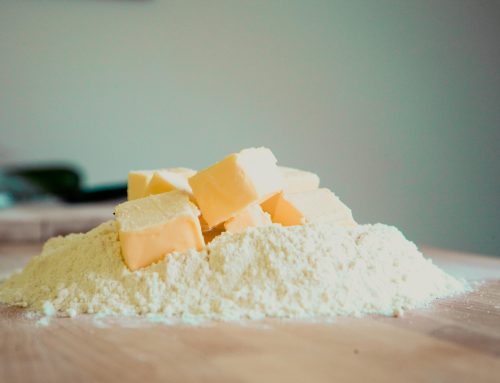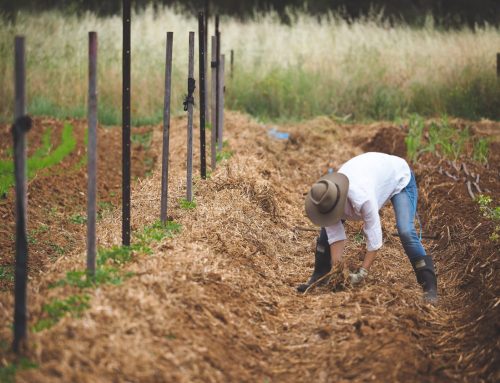The following presentation was delivered by AFSA President Tammi Jonas on 18 June 2020 in a webinar hosted by the World Wildlife Fund, the World Health Organisation, and the Convention on Biological Diversity for an audience of 450 UN organisations, NGOs, and social movements – ‘Protect and Preserve Nature, the Source of Human Health: Stepping up action for an ambitious post-2020 Global Biodiversity Framework’. The session was recorded and is available online – it runs for one hour and thirty minutes. AFSA was honoured to represent civil society as this high level event as a member of the International Planning Committee for Food Sovereignty.
***
I don’t need to rehearse the problems of the current food system for this audience, as you all know them well – I would rather focus on solutions in our limited time.
I will say one thing though, the current pandemic is simply the most significant, costly externality of industrial agriculture we have witnessed in such a short period of time, and it’s well past time to insist that industrial agriculture pays its own way in the world, for only then will it seek to reduce its costs.
A quick reminder from history as we weather the COVID19 pandemic: Critical analysis of the 2003 outbreak of swine flu (H5N1) detailed its early emergence around a subsidiary of Smithfield in Mexico. The plant was opened in the wake of NAFTA, and evolutionary epidemiologist Rob Wallace calls it the ‘NAFTA flu’. He says the name swine flu detracts from an obvious point: ‘pigs have very little to do with how influenza emerges. They didn’t organize themselves into cities of thousands of immuno- compromised pigs. They didn’t artificially select out the genetic variation that could have helped reduce the transmission rates at which the most virulent influenza strains spread. They weren’t organized into livestock ghettos alongside thousands of industrial poultry. They don’t ship themselves thousands of miles by truck, train or air. Pigs do not naturally fly.’
I raise this analysis to remind us that we have known for some time that intensive livestock production presents enormous ecological and public health (and of course economic) risks, as do most industrial production systems, and that it really is time to act boldly and ambitiously to reverse the trend, and make the long-called for transformation to healthy and sustainable food systems. Agroecology, anyone?
So when I hear or read of proposed solutions to the monumental issues we are facing – biodiversity loss foremost amongst them – I, like many food sovereignty activists, apply my food sovereignty lens to all proposals.
What that leads me to do is to ask of every so-called solution – is it:
- Accessible
- Nutritious
- Culturally-appropriate
- Ecologically-sound
- Democratic
I thought tonight we could take a look at some of the proposals doing the rounds, and apply the food sovereignty lens to them.
First – we’re often told that we need to increase production to feed the world. False. We already produce enough food to feed up to 10 (or some estimations say 12) billion people. And while we already produce plenty of food, our work to eliminate hunger and malnutrition has plateaued and is going backwards. We produce enough food, but people are still hungry or malnourished – and we suffer the double burden of malnutrition – underweight and overweight, even in the same countries.
What we really need is increased democratic participation in the food system – by everyone, but no one more than Indigenous Peoples and small-scale farmers and fisherfolk.
So what are the concrete proposals for the false solution of increasing production, and what alternatives do we have? Let’s examine them one by one, with our food sovereignty lens handy and our biodiversity framework in hand.
We’re told we need GMOs to increase yield, for resistance to disease, for resistance to ever-increasing loads of pesticides and herbicides, for resistance to the negative impacts of climate change…
False. If Indigenous Peoples and peasants have an equal say in the food system, we know we have higher levels of biodiversity in seed and breed, and every person here tonight knows that we desperately need more biodiversity for resilient and nutritious food systems. GMOs are controlled by a very few multinational corporations in the world, growing ever-fewer varieties of breeds and seeds.
We’re told we need biofortification to make staples more nutritious in places of severe food insecurity and micronutrient deficiencies.
False. If Indigenous Peoples and peasants have an equal say in the food system, we have locally-adapted and culturally-appropriate food for local communities.
We need lab-grown meat and biocultures to solve the worst ills of intensive livestock production and our growing need for protein.
False. If Indigenous Peoples and peasants have an equal say in the food system, we have local ownership, higher animal welfare, and reduced public health risks.
I don’t believe anybody here believes we need more intensive livestock production or monocultures of the severely limited number of crops feeding most of the world these days, but these are also posited in the productivist paradigm as ‘necessary’ to feed the world, and many are trying to work out how to run intensive production systems in a ‘least harm’ way.
But what if we approached the food system transformation and the biodiversity framework in a ‘most good’ way instead? We would ensure Indigenous Peoples and peasants have an equal say in how to steward the land and produce food, and the extraordinary and unacceptable risks of industrial food systems would eventually be eliminated altogether, while biodiversity, local food economies, and community health would flourish.
We could halt biodiversity loss, slow and eventually halt climate change, and ultimately end hunger.
But we won’t achieve this while the foxes are in charge of the henhouse.
Every solution that proposes to concentrate control of the food system in fewer hands is a false solution.
Instead of increasing technological fixes to a technocratically damaged food system, we have to invest in social, rural solutions – cooperatively owned infrastructure such as grain and rice mills, abattoirs, and farmer’s markets. Investing in social infrastructure is harder than capitalising on commodities, but like democracy, just because it’s hard doesn’t mean we shouldn’t do it.
What I’m proposing is to do as the UN Declaration on the Rights of Peasants and Other People Working in Rural Areas and the UN Declaration on the Rights of Indigenous Peoples already admonish us to do – give peasants and Indigenous Peoples more say in and control of the food system, and leave it to us to sort this out.





